Thierry Mugler Le Parfum Coffret : Perfume Review
Although the end of 2006 is still 2 months away, I anticipate Thierry Mugler’s Le Parfum coffret being the highlight of this perfume year for me. Fragrance exerts its power when it inspires dreams, stretches reality and allows one a glimpse into a world of fantasy. Ultimately, it is the easiest way to add beauty to the everyday routine. In this regard, fragrance does not have to be narrowly defined as liquid in a bottle, but can also include the aromas experienced when making a cup of coffee in the morning, walking past a freshly mown lawn, biting into a hot pastry, or enjoying a glass of wine with friends.
Le Parfum coffret offers artistic interpretations of scenes from the bestseller by Patrick Süskind, “Perfume: The Story of A Murderer”, the story of genius perfumer Jean-Baptiste Grenouille, who seeks to create the ultimate perfume amid the malodourous streets of France in the 18th century. However, Thierry Mugler’s coffret is even more than this—it is a reflection upon the history of perfumery, the essence of art in perfumery and the perfumer’s role. It offers a fascinating journey, the magic of which does not fade even after repeated exploration. …
The story behind Le Parfum is quite interesting, in that the project did not follow the typical perfume house briefing process, wherein the house determines the concept for a new fragrance and submits it for competition. Christophe Laudamiel, a perfumer working for International Flavors & Fragrances and the author of fragrances such as Estée Lauder Youth Dew Amber Nude, Slatkin Persian Lime and Mimosa and Michael Kors Island, being fascinated by the novel, had started the olfactory interpretation of the book in 2000, a project that was rather personal and never intended as a commercial undertaking. When smelling the exquisite beauty of Virgin No. 1, the grotesqueness of Human Existence or the mineral austerity of Ermite, it is impossible not to think of these fragrances as labours of love, creations driven purely by passion rather than commercial considerations. When DreamWorks/Constantin Film decided to bring Süskind’s novel to the big screen, Laudamiel and his partner Christoph Hornetz teamed up with Thierry Mugler and Vera Strübi, its president, to realize the project.
There are fifteen fragrances in the coffret, each representing a particular scene from a book, as well as Aura, the essence of Grenouille’s art. Each fragrance is fascinating, while ranging from stunningly beautiful to grotesquely fetid. None are conventional. They touch upon different perfume families, yet in many ways they offer a glimpse of Laudamiel’s art, his iconoclastic visions, his search for innovative accords. Though classical perfumery has an established body of combinations that are known to work (Thierry Mugler Angel’s patchouli and ethyl maltol, by way of example, is one of the relatively recent discoveries), the aspect that makes even the commercial work by Laudamiel interesting is his tendency to experiment with novel effects. The perfumes in the Le Parfum coffret reveal his avant-garde tendency with striking clarity. If a new era in perfumery is to be born, it would be thanks to cutting edge projects like this one.
I have started exploring the coffret by picking up bottles randomly, without following the storyline of “Perfume”. I will present my impressions below, noting the part of the novel that inspired the individual fragrance. Although the fragrances are best understood as conceptual works of art, I found a few that are too beautiful not to be worn on the skin. I am certain that my choices will not reflect universal preferences. In fact the range of fragrances allows for independent discovery.
Virgin
No. 1 Part I, Chapter 8 of “Perfume: The Story of A Murderer”
“A girl was sitting at the table cleaning yellow plums… A hundred thousand odours seemed worthless in the presence of this scent. It was pure beauty.”
In one of the interviews with Laudamiel, I read that the IFF team worked to capture the scent of a young girl’s navel via headspace (a technology designed for capturing and analyzing the aroma molecules in the air around the source of scent.) This novel accord was used in Virgin No. 1. While I was intrigued by the idea, nothing prepared me for the sheer beauty of the fragrance. The base of the composition is the most exquisite musky accord, milky like fresh cream, smooth like peach skin and warm like delicate cashmere. An intoxicatingly luscious plum is woven though the musky tapestry, lightening it and lending it an irresistibly playful facet. Although it is amazing on the blotter, on the skin, the fragrance reveals all of its beautiful facets in a panoramic manner. It is innocent, and yet it possesses a beguiling and sensual edge. It is subtle, yet its sillage is magnificent. It is breathtakingly beautiful.
Baby
Part I, Chapter 2
“The wet nurse hesitated. She knew very well how babies smell… ‘It smells like caramel, it smells so sweet, so wonderful.”
Orange blossom and whipped cream are the main impressions of Baby. Its gentle milky note lends a matte quality to the composition. It is the ultimate scent of a baby’s head, clean, sheer and innocent.
Paris 1738
Part I, Chapter 7
“It was a mixture of human and animal smells, of water and stone and ashes and leather, of soap and fresh-baked bread and eggs boiled in vinegar, of noodles and smoothly polished brass, of sage and ale and tears, of grease and soggy straw and dry straw.”
Sweat, orange blossom, indoles, rosemary, and dirty hair emerge as a series of impressions from Paris 1738. Overlaying the unctuous mélange is a fresh note that fights against the fetid aspects of the composition. It is intriguing in the same way that the scent of lemon wafting through an oily fish market catches one’s attention. Paris 1738 is hardly attractive, but its attempt to paint a picture of urban life in the 18th century is fascinating.
Atelier Grimal
Part I, Chapter 6
“He scraped the meat from bestially stinking hides, watered them down, dehaired them, limed, bathed, and fulled them, rubbed them down with pickling dung, chopped wood, stripped bark from birch and yew…”
I inhaled a blotter cautiously, but instead of the noxious tanning aromas that I expected, the scent that wafted forth was the aroma of a brand new leather handbag. In the drydown, a delicate whisper of smoke accents the animalic notes of Atelier Grimal.
Boutique Baldini
Part I, Chapter 9
“And here as well stood the business and residence of the perfumer and glover Giuseppe Baldini… A cloud of the frangipani with which he sprayed himself every morning enveloped him almost visible, removing him to a hazy distance. … However exquisite the quality of individual items—for Baldini bought ware of only highest quality—the blend of odours was almost unbearable…”
Spice and beeswax dominate my initial impressions of Boutique Baldini, underscored by a pronounced violet note. The balsams and incense lend a heft that one would expect from a perfume meant to evoke an overstuffed store with all sorts of perfume goods. It is rather indulgent and eccentric. Yet for all of its extravagance, Boutique Baldini has a classical air.
Amor & Psyché
Part I, Chapter 12
“The perfume was disgustingly good. That miserable Pélissier was unfortunately a virtuoso. An absolute classic—full and harmonious… It was fresh, but not frenetic. It was floral, without being unctuous.”
Amor & Psyché is Laudamiel’s idea of the competitor’s perfume that Baldini desperately tried to recreate and only succeeded with the help of Grenouille. It catalogues a perfume style that relied on a large proportion of fresh citrusy notes, to which animalic ingredients would be added. Rounding out the composition is the rich heart of floral essences. Guerlain Shalimar is one of the surviving examples of this technique. Amor & Psyché has a classical character, but executed solely with natural ingredients. Its intensely aromatic character can be a bit jarring, and there is a somewhat rustic aspect about it, perhaps, an intended reflection on Grenouille’s exclamation, “It’s not very good, this Amor and Psyche, it’s bad, there’s too much bergamot and too much rosemary and not enough attar of roses…”
Nuit Napolitaine
Part I, Chapter 15
“’If you’ll let me, Maitre, I will make it better. Give me a minute and I will make a proper perfume out of it!’ … He [Baldini] saw himself as a young man walking through the evening gardens of Naples; he saw himself lying in the arms of a woman with dark curly hair and saw the silhouette of a bouquet of roses on the window-sill as the night wind passed by…”
If Amor & Psyché struck me as elegant, but rustic, the first impression upon smelling Nuit Napolitaine was of something decidedly more modern. It relies heavily on the citrus notes, accenting them with minty freshness. The balsamic notes in the base of the composition appear less heavy than in Amor & Psyché, and the fragrance retains a luminous quality even in the drydown. It has an unexpectedly androgynous quality, its fresh top masking the animalic whispers in the base.
Ermite
Part II, Chapter 25
“Near his watering spot he discovered a natural tunnel leading back into the mountains by many twists and turns, until after a hundred feet or so it came to an end in a rock slide.”
Smelling Ermite on the blotter, I was convinced that it is a great atmospheric fragrance, but eventually I decided to put it on my skin. I am glad I did, for Ermite dried down to a composition that balances a mineral chill and woody warmth. A flinty note hides under the earthy layer of patchouli, its effervescent dryness lending an interesting complexity. A mineral and mossy composition, Ermite recalls the scent of hot rocks. There is nothing to which I can compare it, and even the mineral notes of Terre d’Hermès do not begin to suggest the abstract quality of Ermite. While it can definitely be worn, this avant-garde perfume may not appeal to everyone.
Salon Rouge
Part II, Chapter 27
“His heart was a purple castle. … It had a thousand private rooms and a thousand underground chambers and a thousand elegant salons, among them one with a purple sofa where Grenouille… would recover from the labours of the day.”
Salon Rouge is a fragrance of hot molten gold, a composition of rich florals on a sumptuous woody base. It opens on a bright citrus note foiled by the honeyed sweetness of ripe orchard fruit. The crisp woody amber laces the velvety heft of the composition, rendering it airy and radiant. Its voluptuous quality becomes even more pronounced on the skin where Salon Rouge blossoms into a ravishingly warm opulence.
Human Existence
Part II, Chapter 31
“There was a basic perfumatory theme to the odour of humanity, a rather simple one, by the way: a sweaty-oily, sour-cheesy, quite richly repulsive basic theme that clung to all humans equally…”
When I took the cautious first inhale, I smelled the fecal sweetness of civet, which while not conventionally pretty, is not among the most noxious perfume materials I have smelled. Yet, the subsequent inhale made me recoil—the acrid burst of cumin over the fecal warmth of skatol, the urinous sharpness over a cheesy sourness. It is a rather complex arrangement of grotesque elements, and this in itself is quite riveting.
Noblesse
Part II, Chapter 31
“On top of this disgusting base, which smelled more like a cadaver than a human being, Grenouille spread a layer of fresh, oily scents: peppermint, lavender, turpentine, lime, eucalyptus, which he then simultaneously disguised and tamed with the pleasant bouquet of fine floral oils—geranium, rose, orange blossom and jasmine… the perfume seemed to exhale the robust, vivacious scent of life.”
If I describe Human Existence as grotesque, I am in awe that Noblesse, one of my favourite fragrances from the coffret, in fact contains the accord of Human Existence. Yet, the intense animalic notes only give a soft radiance to the floral bouquet of Noblesse, a refined and voluptuous composition reminiscent of classical Guerlain fragrances with its iris and vanilla notes. The stunning rose note in the heart of Noblesse is gives the fragrance a fin de siècle quality. Noblesse is a fragrance I would wear to dream of grand balls at the Winter Palace.
Jasmin Absolu
Part III, Chapter 37
“Jasmine season began at the end of July, August was for tuberoses. The perfume of these two flowers was both so exquisite and so fragile that not only did the blossoms have to be picked before sunrise, but they also demanded the most gentle and special handling.”
Jasmine as a fragrance note is one of the most indispensable in the perfumer’s palette, and experiencing high-quality jasmine absolute is a special experience. It has a fragrance of white flowers, ripe tropical fruit, touched with a luxurious animalic darkness. Jasmin Absolu is essentially true jasmine, presented in its full beauty—expansive, opulent, hinting at the scent of warm skin. As a personal fragrance, Jasmin Absolu has quickly become my perfect jasmine.
Sea
Part I, Chapter 7
“…the endless smell of the sea—which really was no smell, but a breath, an exhalation of breath, the end of all smells—dissolving with pleasure in that breath.”
Sea is an interpretation of the ocean and its scent. The marine freshness of the perfume material Calone is what I notice the most, and as it unfolds, its surge is accented with citrus and melon notes.
Orgie
Part III, Chapter 49
“And then a miracle occurred… The result was that the scheduled execution of one of the most abominable criminals of the age degenerated into the largest orgy the world had seen…”
As an olfactory experience, Orgie is just fascinating—the scent of skin, warm and vanillic; the odour of sex, erotic and musky; the dark undercurrent of something that oscillates between chocolate and excrement. The luminous beauty of the same facet that gives Virgin No. 1 its allure gently hovers over this mélange. It is not a fragrance to which a quick sniff will give justice. The exploration of its numerous twists and turns is where the pleasure of Orgie lies.
Aura is the only fragrance in the coffret that is slated to appear separately. In many ways, I find it to be the most approachable of the fifteen, but it makes it no less fascinating. It is warm, without being spicy; rich, without being heavy; woody, without being dense; musky, without being animalic. Sometimes, I glimpse the heat of Salon Rouge inside the composition, other times I notice the sweet luminosity of Virgin No. 1. On yet another occasion, the intoxicating floral mélange ornaments my skin like a garland of freshly picked white jasmines. It does not overwhelm, yet one notices its presence constantly. It feels familiar, yet I cannot seem to solve its riddle. In many ways, the search for the key to Aura might be superfluous—some mysteries should remain unsolved.
For more information, please see Thierry Mugler Le Parfum website. The coffret is also available from Harrod’s in the UK as well as on sale in stores across Europe, such as Sephora, Douglas and Nägele & Strubell. Information on the backstory of creation via Cosmetic World, Brigitte and German Vogue. Perfume the movie is scheduled to open in the US theaters around December.
Article originally appeared on October 30th, 2006. Reprinted in its original, unedited form.




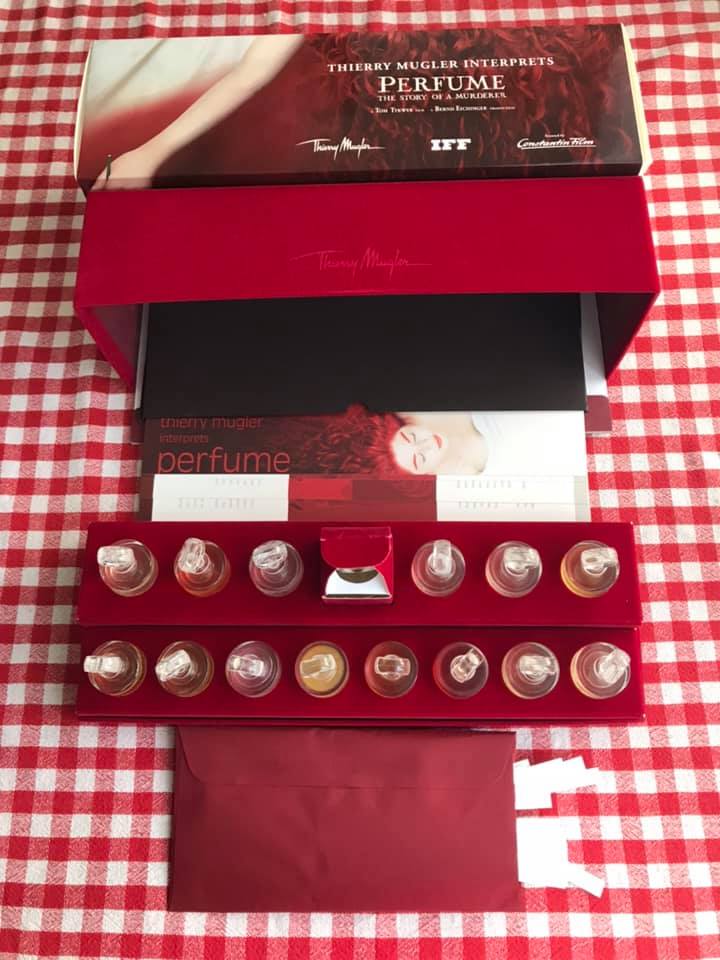
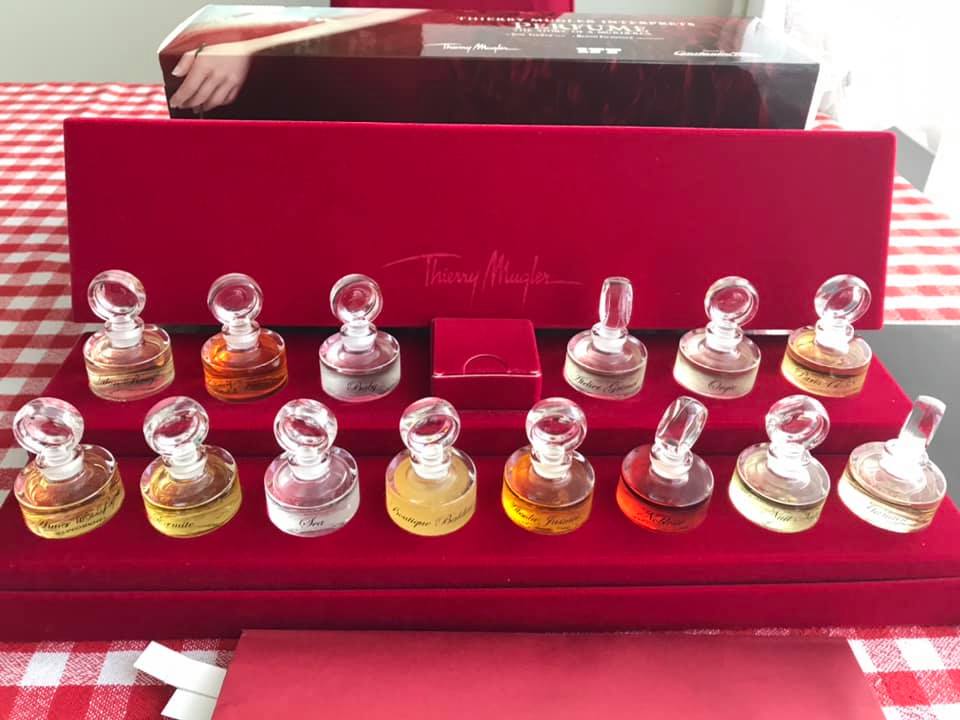

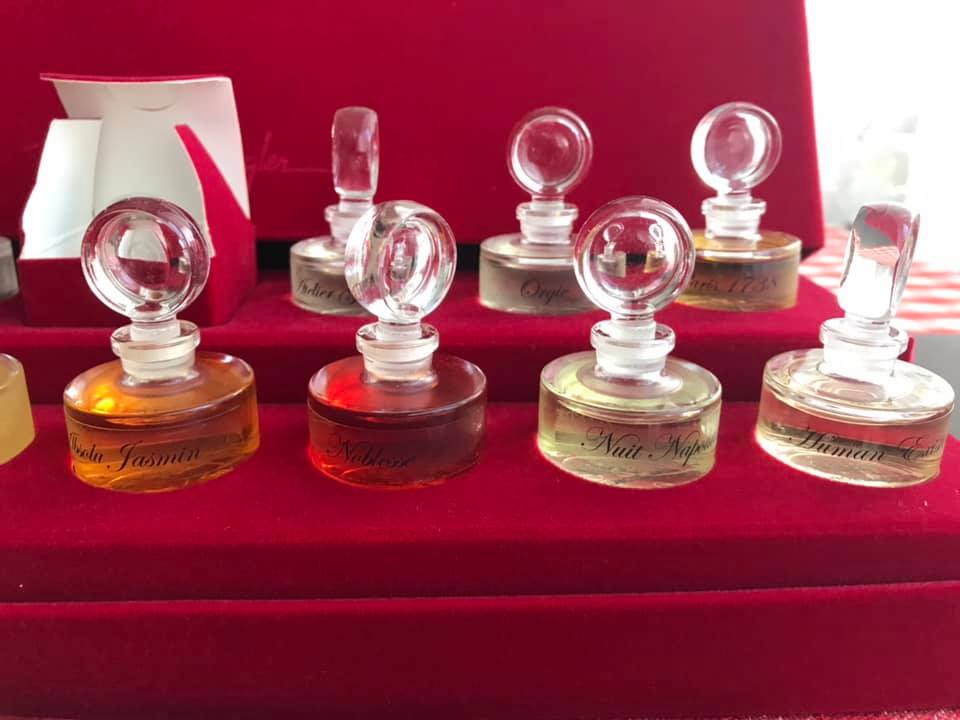
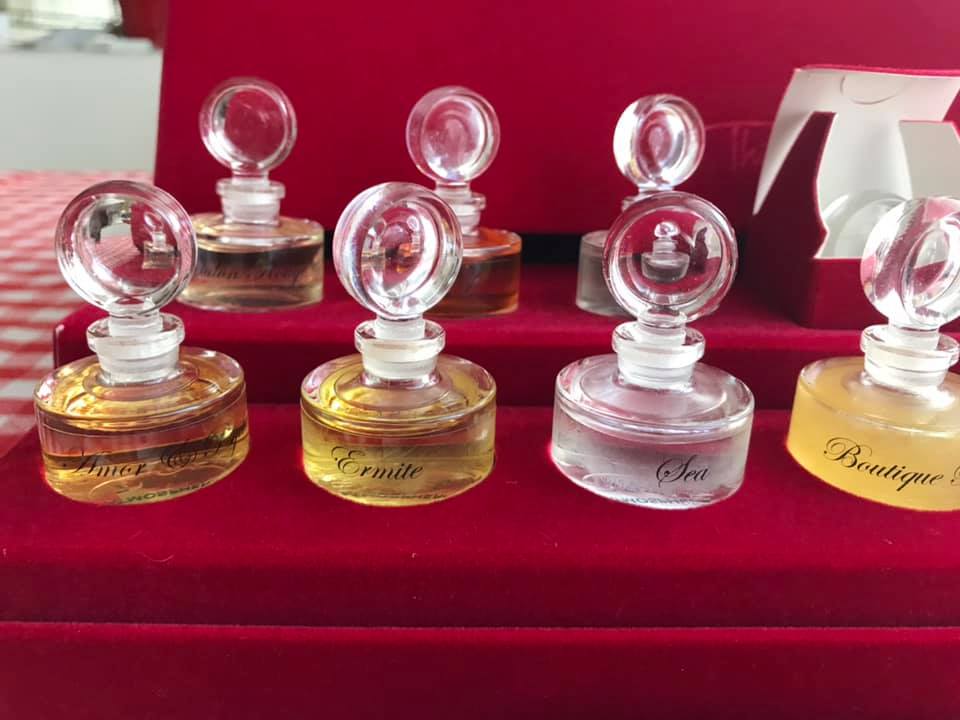
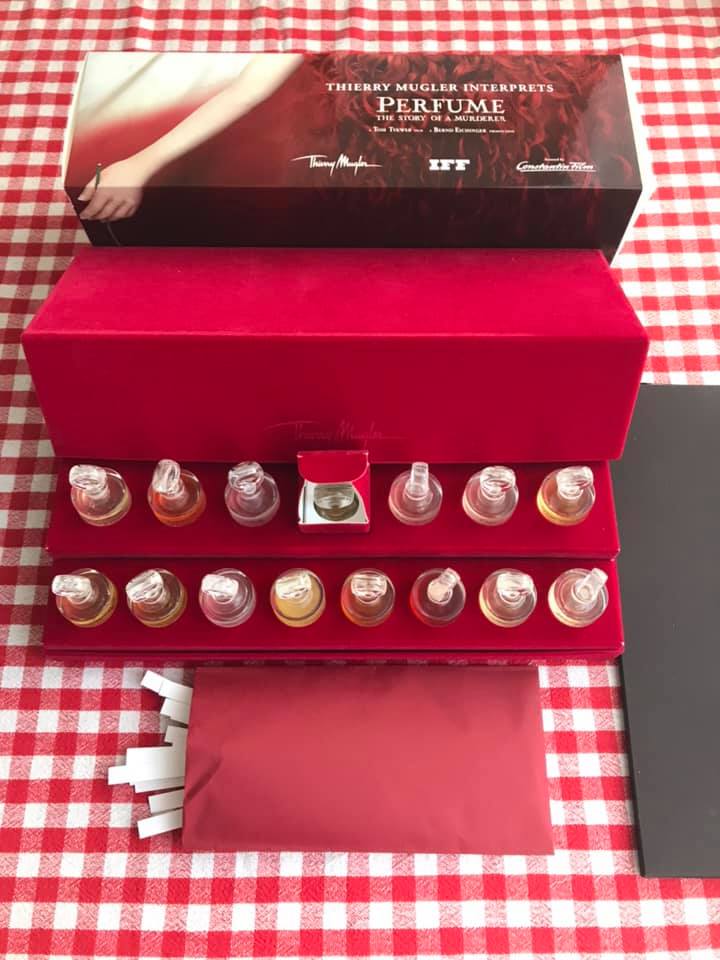
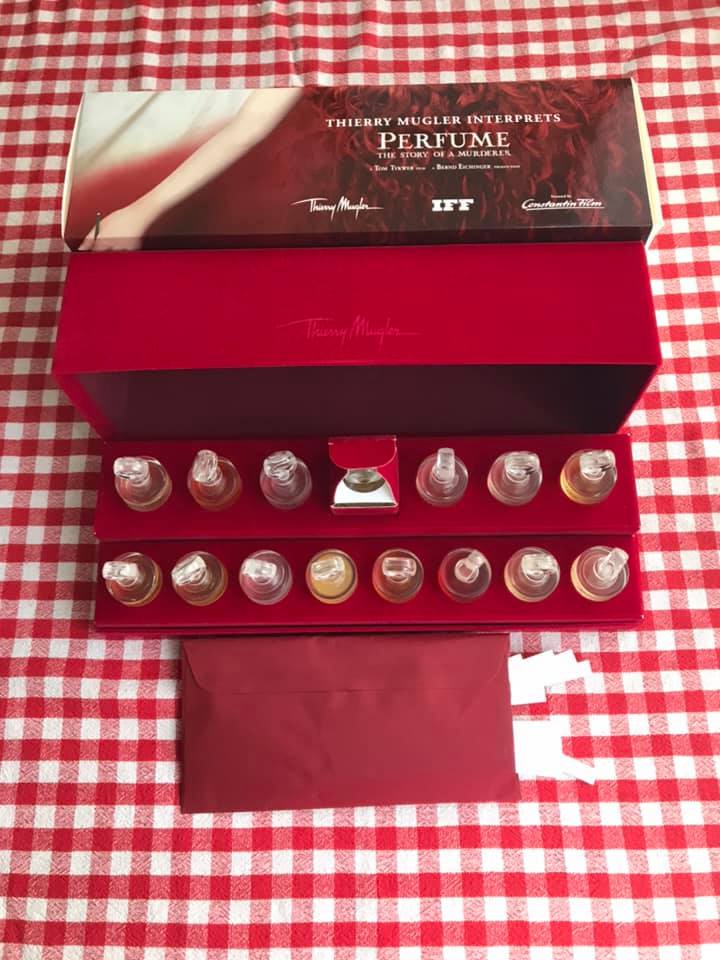
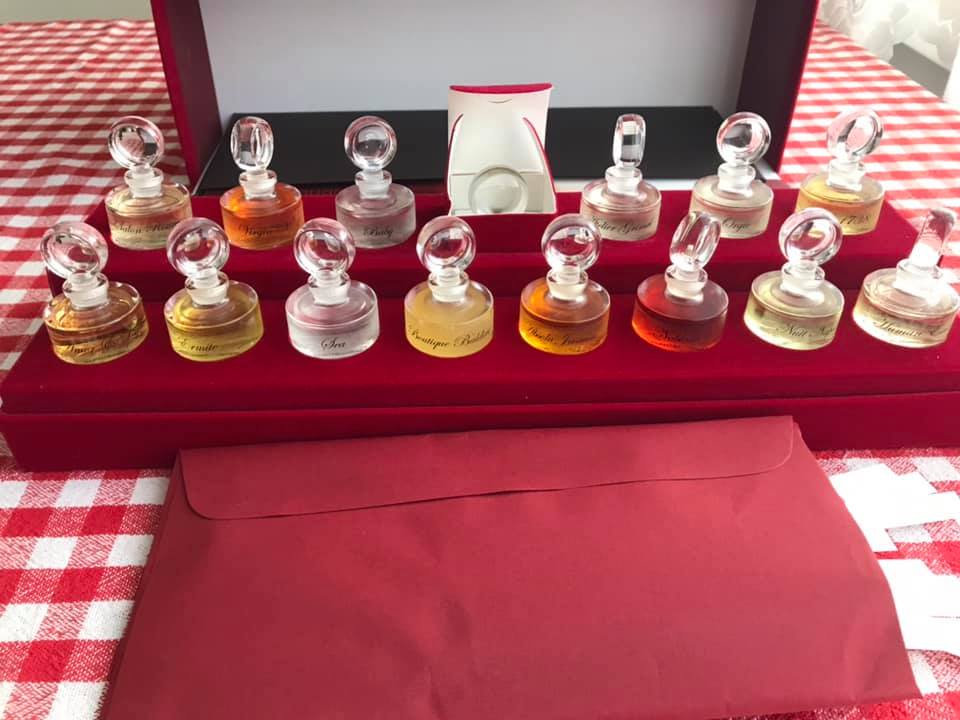
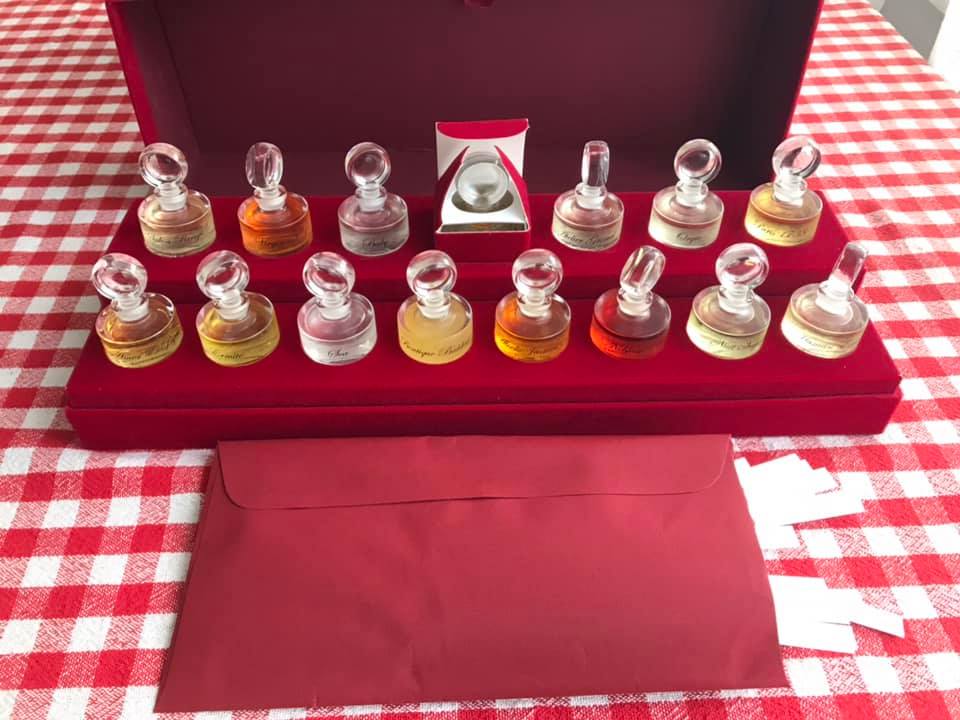

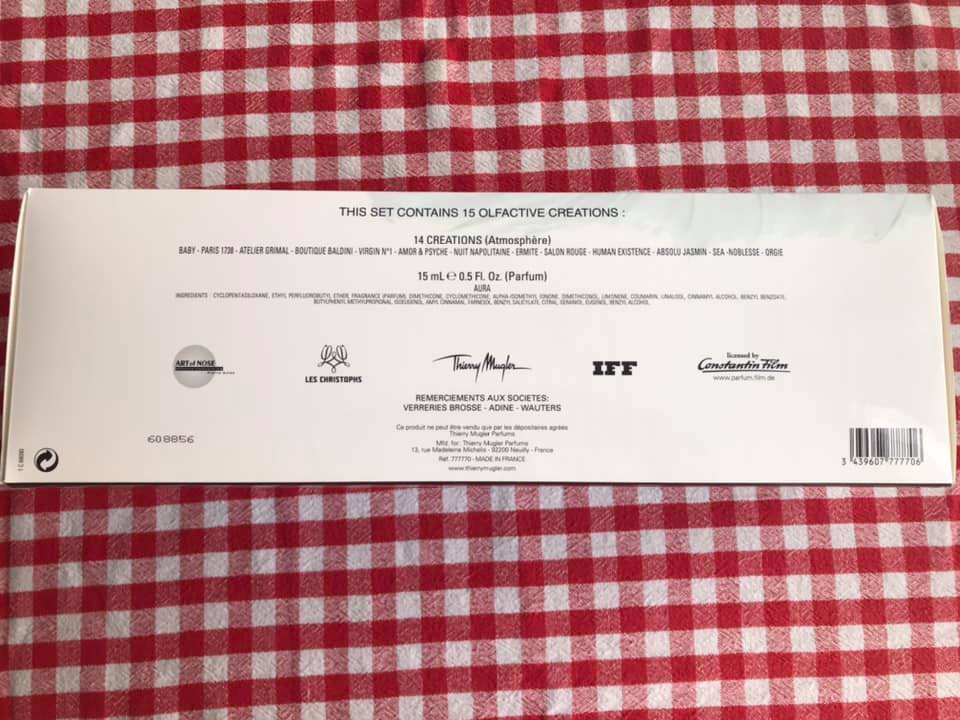






Recenze
Zatím zde nejsou žádné recenze.